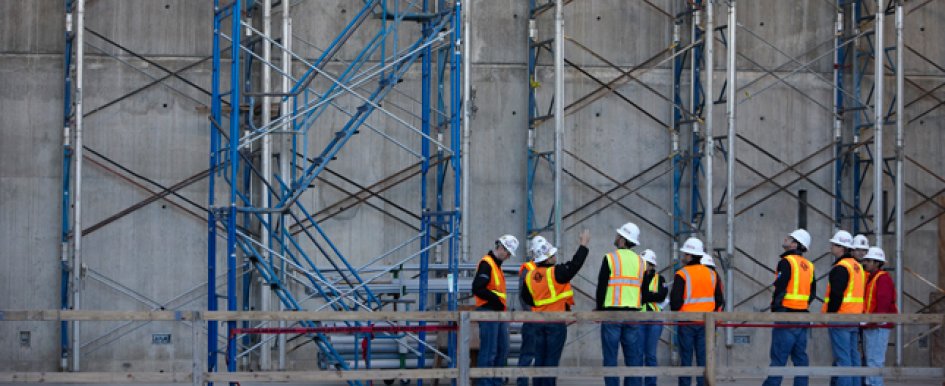
For most businesses, workers’ compensation is the largest insurance expense line item. Being able to secure the lowest possible premium and reduce the impact of an audit will help you avoid the headaches many companies face in managing this insurance. Unfortunately, construction owners face significant workers’ compensation-related challenges that other industries do not. As you are likely aware, your premiums are based on your payroll and how it is classified. When payroll looks like it may be misclassified, insurance companies conduct thorough audits to adjust premiums and coverage.
What is Misclassified Payroll? Misclassified payroll can mean different things. In some cases, it refers to the difference between full-time employees and independent contractors. In the context of this article, it refers to payroll class codes, the job classification of your employees as administrative, roofing, electrical, carpentry, etc. These classifications influence the insurance rates you pay for workers’ compensation coverage. The National Council on Compensation Insurance (NCCI) is the licensed rating and statistical organization in 33 states. The NCCI classification system classifies the overall business enterprise of an employer, but it makes an important exception for construction businesses. For construction employers, multiple classifications may be assigned to employees, depending on the work they perform. Non-construction employers may also have certain workplace exposures broken out into different classification, such as clerical, outside sales and driver, but not at the level seen in construction.
Misclassified payroll can mean different things. In some cases, it refers to the difference between full-time employees and independent contractors. In the context of this article, it refers to payroll class codes, the job classification of your employees as administrative, roofing, electrical, carpentry, etc. These classifications influence the insurance rates you pay for workers’ compensation coverage. The National Council on Compensation Insurance (NCCI) is the licensed rating and statistical organization in 33 states. The NCCI classification system classifies the overall business enterprise of an employer, but it makes an important exception for construction businesses. For construction employers, multiple classifications may be assigned to employees, depending on the work they perform. Non-construction employers may also have certain workplace exposures broken out into different classification, such as clerical, outside sales and driver, but not at the level seen in construction.
Valen Analytics provides data and analytics to help property and casualty insurance companies evaluate the potential risk of individual policies. In 2012, we produced a report on payroll misclassification in construction. When we examined the four-year period from the beginning of 2008 through the end of 2011, we found that construction has the largest percentage of misclassified payroll, resulting in an average of 14 percent, or $76.8 billion, in post-recession payroll out of the 20 distinct industries identified by the North American Industry Classification System. Interestingly, the misclassified payroll in construction is highly concentrated in 15 job classification codes.
Top Class Codes
Valen’s data modeling team analyzed 106 class codes within construction, classifying the top 15 as key drivers of misclassification, which account for 75 percent, or $57.6 billion of the total $76.8 billion, of misclassified payroll. The total misclassified payroll amount is based on the most recent Bureau of Labor Statistics 2010 payroll for construction.
Workers’ compensation class code definitions are inconsistent across geographic regions, but the top 15 loosely represent the following types of construction work:
Code Generic Description
5190 Electrical technician
5183 Plumbing
5606 Contracting
3724 Electrical machinery repair
5022 Masonry
5403 Carpentry
5437 Carpentry
5221 Pavement
5213 Concrete construction
5537 HVAC (heating, ventilation, air conditioning)
6217 Tunneling
5474 Painting
5506 Road construction
5348 Stonemason
5645 Door installation
Why Misclassification Matters
When an industry has significant misclassification issues, it can affect the premiums all companies within that industry pay. Part of the reason construction ranks as the highest industry for misclassification is that it is the most heavily scrutinized. There are many more job classification categories in construction than other industries, which also means there is a wide variance in the insurance rates companies are charged. Misclassified payroll is typically identified following an audit, and larger accounts have a higher likelihood of being audited, given the difficulty auditors would face trying to track down the hundreds of thousands of small construction companies with owners in the field every day.
Being prepared for a workers’ compensation insurance audit is critical. If significant issues are found during an audit, your rates can increase sharply and for the long term, you can suffer gaps in coverage and in some cases you can be denied coverage.
The Workers’ Compensation Audit
Imagine you just received notification that the IRS is going to audit your tax return from last year. What would you do? You would scour through your records, prepare detailed answers to the IRS’s list of questions and make the best case possible to back up the original tax return you submitted. The same principles apply to a workers’ compensation audit—knowledge is power. You need to be prepared by knowing your state’s payroll classification rules and audit rules.
If you are audited, review the following:
- The estimated premium calculations on the original policy, including the classification codes included and how much payroll was assigned to each classification – Compare the original policy to the audit billing statement to see if the adjustments in classification are accurate.
- The estimated payrolls on the original policy compared to the payrolls found on the audit – If there are discrepancies, the audit will provide a detailed explanation and list assumptions made if the auditor didn’t have access to all necessary documentation. If overtime pay is included in the audit, check to see if you can exclude the premium portion of overtime pay, which is allowed in many states.
- Uninsured subcontractors – These subcontractors usually have the same rights as employees to file a claim under your policy, which means that insurance companies are paying more attention to subcontractors. If this adds up to substantial premium charges, you can require certificates of insurance from subcontractors.
- The experience modification factor on the policy versus what is shown on the audit – Most states prohibit increasing the modifier late in the policy term, so if the modifier is higher on the audit than on the policy, it may not be correctly listed.
Intuitive best practices go a long way to helping construction companies manage an audit. Maintain accurate records so that auditors can easily access information and reduce errors in the audit process. Create written evidence of the policies and procedures you follow to create a safe work environment. Safety programs like fall prevention and lock out or tag out will be beneficial if they are well documented. Where appropriate, take advantage of your insurance carrier’s loss-control engineering programs.
As insurance companies continue to grow in their sophistication and analytical capabilities, those construction companies that institute best-in-class programs and document their processes will be able to lower their workers’ compensation rates and minimize the impact audits have on your operations.
